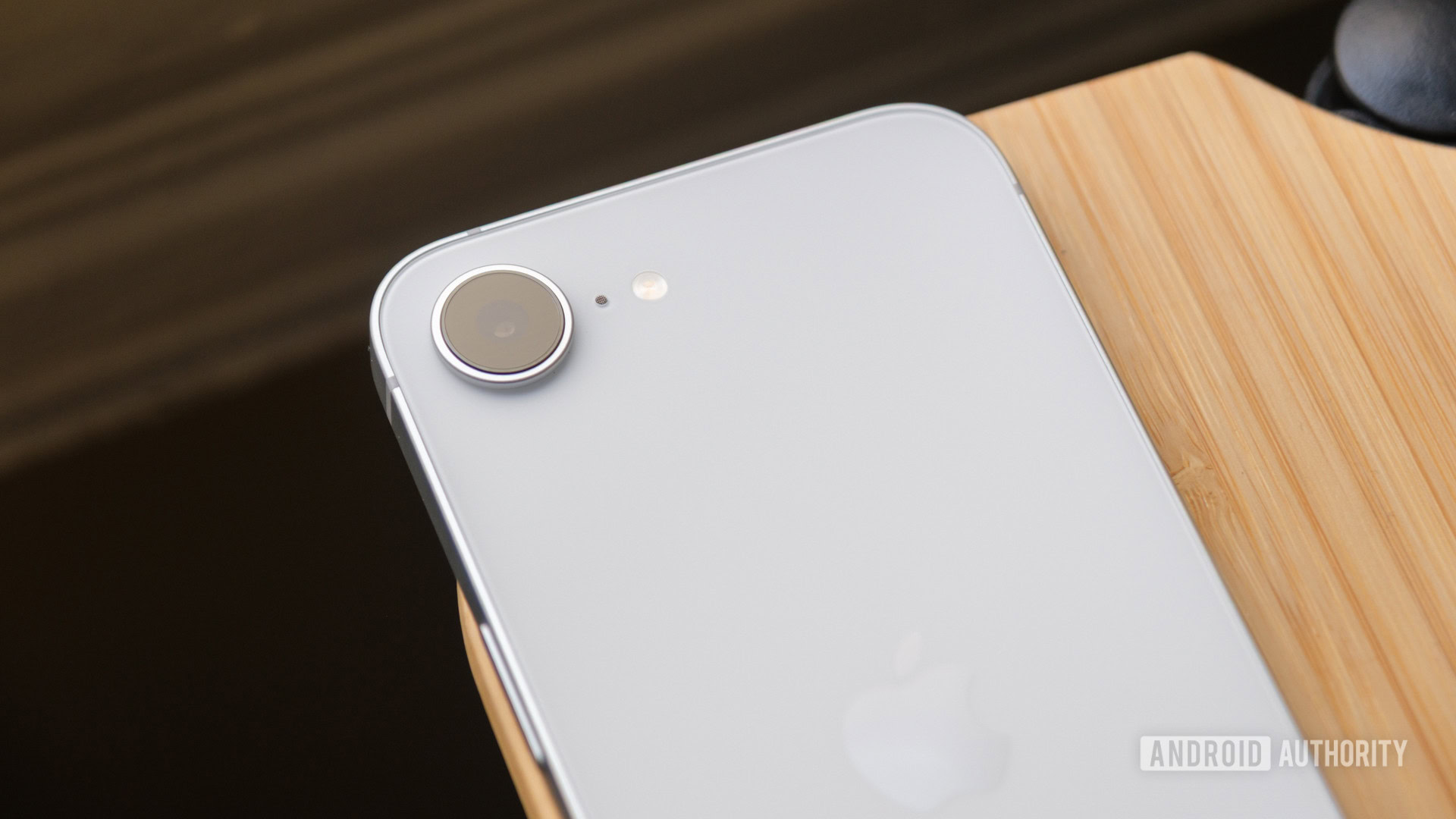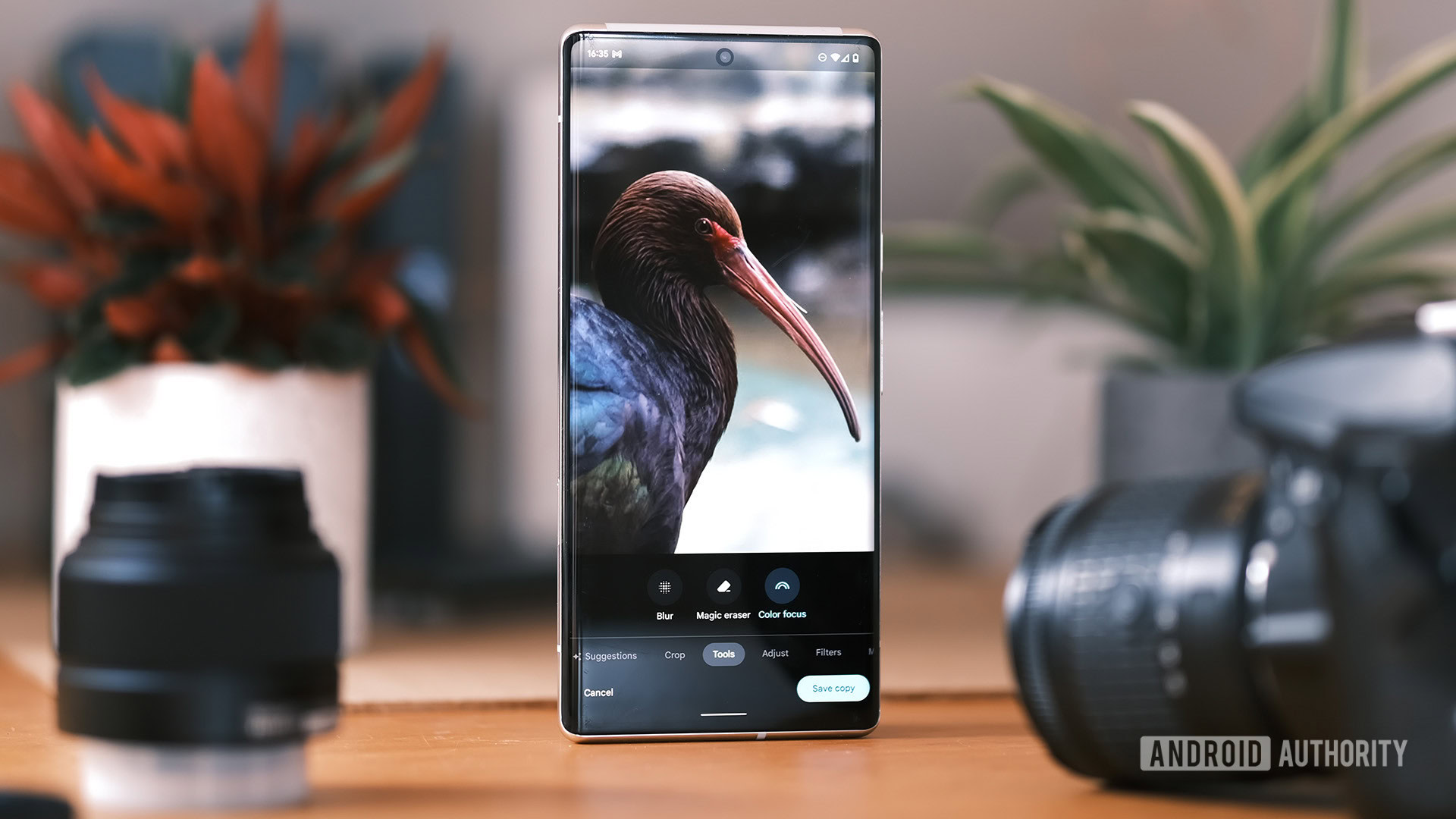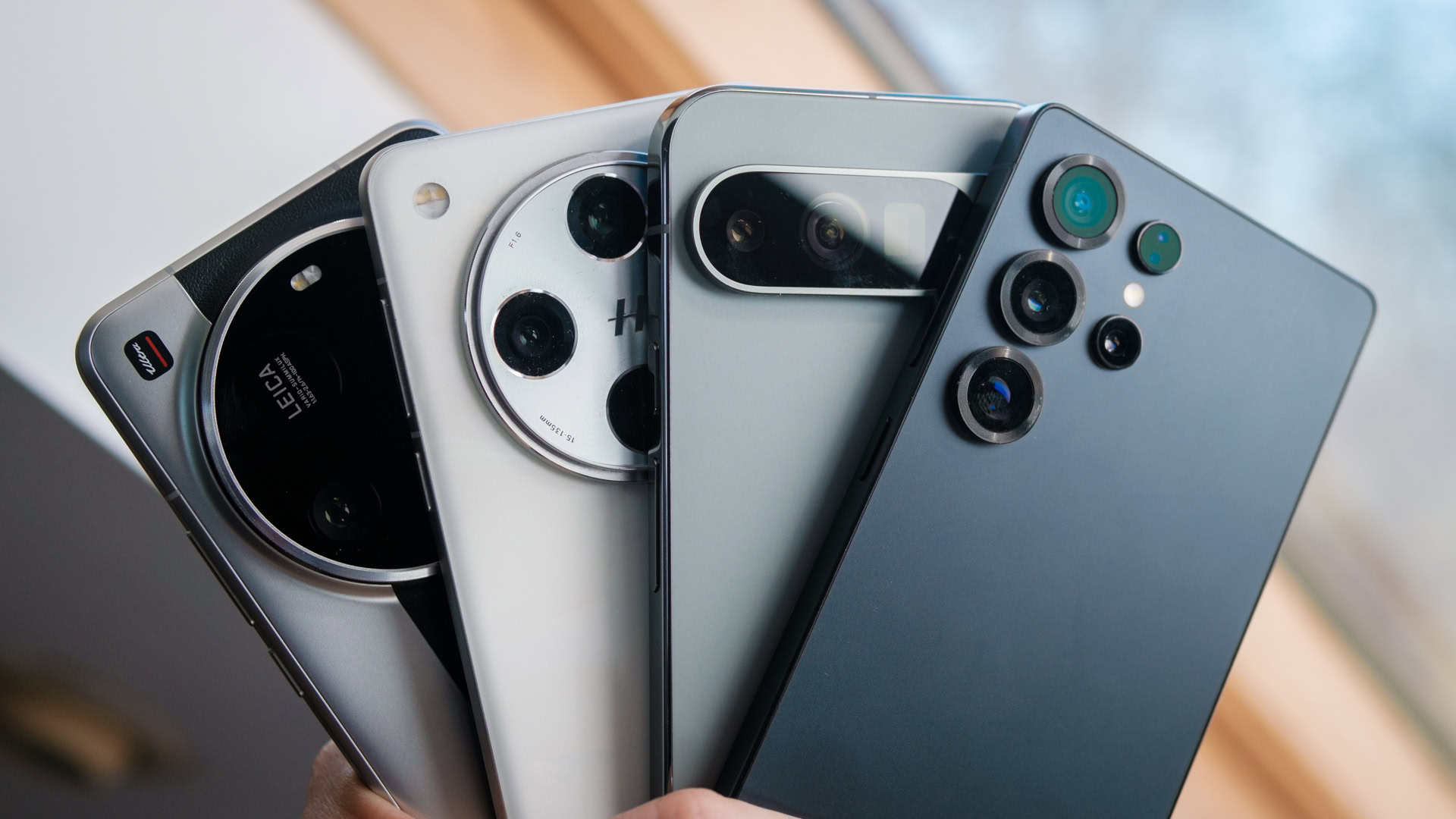
Robert Triggs / Android Authority
It is 25 years since the Samsung launched the Sch-V200, which disputed the title of the first camera phone (the sharp J-sh04 also has an eye on the price). There was certainly nothing like the photography hemoths we carry around in the pockets today – just a tiny 0.35MP baking camera with storage for 20 images at a time. Compare that with today’s Best camera phones With 200 megapixels, 1-inch image sensors and quadrupled lenses, and it’s hard not to feel a little old.
There have been plenty of brilliant camera phones over the last two and a half decades. So to mark 25 years ago the Sch-V200 (whether it really was the first or not), I thought I would take a walk down the memory field with some of my personal favorites.
Sony Ericsson K750i (2005)

I’m with me here, but before Android was one thing, I bought a Sony Ericsson K750i on what felt like a scandalous expensive contract (honestly, which lets teenagers sign telephone contracts?). Back in 2005, I had no idea that I bought a sleeping here. The K750i was a massive success for Sony, to a large extent thanks to the groundbreaking camera. It packed a 2MP shooter with double LED flash -trust me, it was impressive at that time. Most phones topped at 0.3MP VGA sensors.
According to today’s standards, the specifications are lean, but Sony and consumers like me saw it as a gaming exchanger. It had a pull -out lens cover (I can still hear the satisfactory snap), a dedicated ejaculation button and a volume lash that doubled as a zoom control. It was built to feel like a small camera you could store in your pocket.
The K750i is often overlooked in early smartphone camera discussions, but it laid the foundation for the K850i, which increased ante with a 5MP sensor, the correct Xenon flash and a more camera-centric interface. It also paved the way for Sony Ericsson’s Cyber shot phones, which aimed to melt Sony’s Xperia phones Continue the same legacy.
The K750i might not have been the first or most memorable, but for me at least it was my first taste of a phone that put the camera in front and middle, and I haven’t looked back.
Apple iPhone 4 (2010)

Ryan Haines / Android Authority
This one is reluctant to my list, mostly because I did not use early iPhones myself. And honestly, even the many Premium iPhones I have tried since would not break my personal top 10. Yet, credit, due to: Apple has played a massive role in shaping camera phone culture, not always by pushing technological boundaries, but by providing mobile photography its mainstream appeal. Who does not love social media after all?
The iPhone 4 is where that transformation began.
With a decent 5MP BSI sensor, 720p video recording, LED flash and a front-facing camera, the iPhone 4 had a solid, if not spectacular, hardware setup. But it was the software and ecosystem that lifted the experience. It made pictures and video sharing not only easily, but inevitable.
IPhone 4 and Galaxy S2 Kickstarted today’s photo -sharing culture.
Facetime introduced millions for video calls – no doubt paved the way for vlogging culture. Instagram launched the same year and gave people a reason to share their iPhone photos. iOS 4 with photo album, geotagging, iCloud security copy and even iMovie for editing videos on the device. When I look back, it’s hard to remember a time when they were not standard.
From a pure photography point of view it was not groundbreaking, but the iPhone 4 is the godfather of the modern mobile photography experience.
However, I spent this era with the sovereign Samsung Galaxy S2. A year later, an 8MP camera and 1080p video features were launched, and also put Android on the multimedia map. I loved mine, although I remember it more like a solid all -rounder than a photography animal. Still, the S2 undoubtedly marked a turning point for Android imaging and the platform’s wider success, much like the iPhone 4 did for Apple.
Nokia Pureview 808 and Lumia 1020 (2012-2013)

Robert Triggs / Android Authority
Fast forward to the real heavy hitter. In its heyday, Nokia was the The mobile brand to beat when it came to imaging, and pushes boundaries all the way back to Nokia N95 in 2007.
Although I never owned One, the 2012’s Purereview 808 left a lasting impression. The debuted Nokia Pixel oversampling tech, which shrunk massive 41MP images in loss-free zoom or detailed versions with low resolution and effectively gives you the best of both worlds. Today’s high -resolution high -resolution owes a lot to this idea, albeit now done in hardware.
The telephone’s 1/1.2-inch sensor was huge-self according to today’s standards and connected with a f/2.4 lens, it can still keep its own in some ways. Unfortunately, 808’s Symbian OS was already surpassed by the budding app’s ecosystems on iOS and Android. Nokia secured her games with Microsoft’s fateful Windows Phone OS, and the 2012’s Nokia Lumia 920 continued to undergo reasonably well.
Purereview was a precursor to today’s massive megapixel sensors.
In 2013, Nokia had moved to Lumia 1020. It turned a 41MP sensor, added a faster f/2.2 lens developed with Zeiss and launched with an optional camera accessory. It even supported raw catch through a later update – a feature that Apple and Android phones would not use in many years. While many camera phones existed before that, 1020 was one of the last before a relative lull in all-out enthusiast cameras.
I still have my canary -yellow 1020 hidden away. I pulled it out five years after launch, and it still held its own against phones that had just just caught up in megapixels. Sure, today’s flagship it blows out of the water in dynamic reach and details, but the soft, natural image quality still has a nostalgic charm of a simpler time. I hold this one, it’s a classic.
Huawei P20 Pro (2018)

Robert Triggs / Android Authority
It is difficult to find out the exact moment when smartphones became real camera change, but the 2017–2019 window feels right. That’s when telephone cameras went from “good enough” to “Why bother with a point-and-slide?” For me, the Huawei P20 Pro is the prominent model that encloses this most exciting period in mobile photography.
First, it was the first phone with a triple camera setup: a 40mp main shooter, an 8MP 3x tele and a 20MP monochrome sensor used for image merging. The pictures? Spectacular at the moment.
Triple cameras and a bag of software tricks make the P20 Pro grandfather of modern flagships.
While the treatment looks heavy -handed now, P20 Pro started by Huawei’s golden era. The P30 Pro was even better, and the Mate series was also considered, but it was the P20 Pro that started the magic.
The P20 Pro also debuted a proper night mode, HDR frame, software controlled aperture Bokeh, Hybrid Zoom and even 960 FPS slow film video, giving a level of versatility I had not experienced before. Others worked with similar features, but Huawei was the first to pack them all in a flagship package that also looked brilliant. Or maybe it was just me who was persuaded to stand out with their cash.
Honestly, I would not mind if anyone visited the monochrome fusion concept today, especially given how ultrawide lenses have begun to feel redundant with the increase in 23mm main sensors. This reminds me that I need to take more moody black and white pictures for my library.
Google Pixel 6 Pro (2021)

Robert Triggs / Android Authority
Yes, I could have mentioned the Pixel lineup much earlier – Google was groundbreaking HDR+ and calculation photography long before 2021 – but it always felt like a smart software that constitutes outdated hardware. It changed with Pixel 6 Pro.
Google eventually joined the big leagues with a 50MP 1/1.31-inch sensor, a 48MP 4X Teleoto and a 12MP ultrawide. HDR+, Super Res Zoom and Night Sight were all tried and tested at this time, but felt renewed with heavy hardware to back them. I was especially blown away by the telephoto lens, which actually produced images as good as the main sensor – a rarity even now. Despite other review units that landed on my desk, I stuck my phone for a couple of years and barely took a bad picture with it at that time.
Pixel 6 Pros cameras finally converted me to Team Pixel.
Pixel 6 Pro also marked a turning point for Google’s camera ambitions. That’s when Pixel finally became a top-tier camera phone and premiered on the now-iconic pixel camera. But with the new hardware came computing photography tools like Magic Eraser, Face Unblur and Real Tone, who have since expanded to a whole AI suite that includes Magic EditorAdd me, video increase and lots of other accessories. Features that were once Pixel -Exclusive are now copied to the left and right.
If I had to choose one older telephone camera to use today, it would be Pixel 6 Pro.
Modern: spoiled with choices

Robert Triggs / Android Authority
When I look back, I have been fortunate as a user and even own some of the most iconic camera phones of all time – some on purpose, some by chance. I have seen the evolution from barely a megapixel to today’s phenomena with four lenses.
Today’s flagship phones – which Google Pixel 9 Pro and Xiaomi 15 ultra – Is undeniably impressive, even compared to models from just a handful year ago. So much that they have left my beloved Fuji mirror -free collect dust on the shelf. From today’s huge sensors and several lenses to shooting tricks and editing tools, no other parts of the smartphone have advanced as dramatically for the last 25 years as the camera.
Of course, I can’t mention every great camera phone without making this a small book. HTC One M7 and its “ultra-gamble” gamble, LG G2/G3 and their laser autofocus, Asus Zenfone 6s rotating front/back camera, and Sony’s Xperia line (especially Pro-I) also deserves a review. In fact, the G3 is still one of my favorite phones at all times, thermal gas products and everything.
But now it’s your turn: Do I miss your favorite camera phone through time? Release it in the comments – I’m always keen to remind you.


